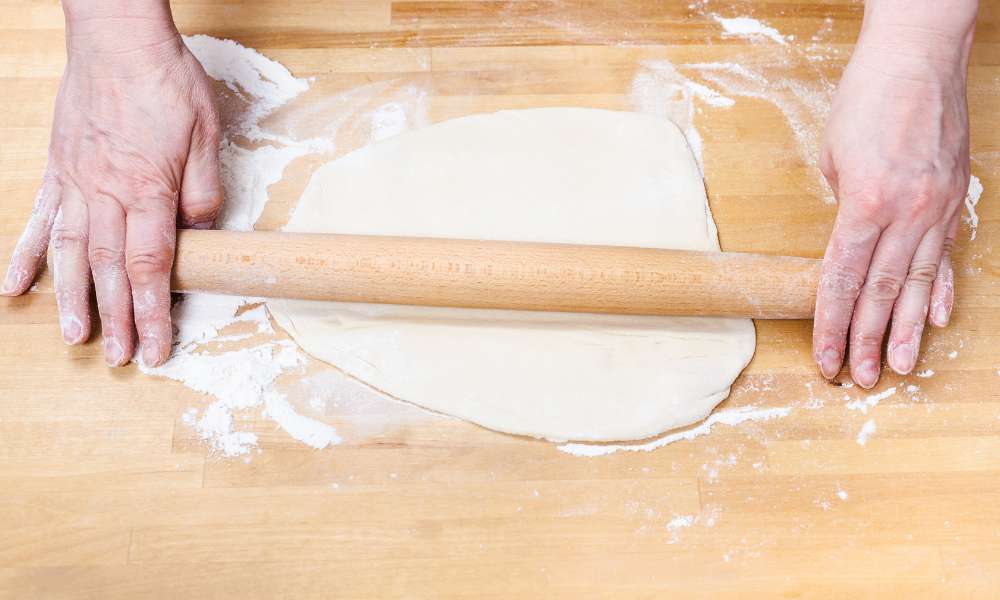Finding yourself without a rolling pin while preparing dough can be frustrating, but it doesn’t have to stop you from achieving perfect results. Whether you’re making pizza, pastry, or cookies, there are several creative and effective alternatives you can use. In this guide on how to roll out dough without a rolling pin, we’ll explore simple household items and techniques that will help you roll out dough evenly. With a little ingenuity and the right approach, you’ll be able to handle any recipe with ease, even without the traditional tools.
Understanding Dough Consistency
Before you dive into using alternative tools, it’s crucial to grasp the essence of your dough. Dough consistency is paramount to rolling success. The texture and temperature of the pastry can make the difference between a smooth roll and a sticky disaster. If dough is too warm, it becomes sticky and unmanageable; too cold, and it may resist your attempts to flatten it. To prepare dough for rolling, ensure it’s been rested—allowing the gluten to relax—and, if needed, chilled briefly to firm up. This simple act of chilling can make the rolling process far easier, especially when improvising with tools other than a rolling pin.
Creative Alternatives to a Rolling Pin
Using a Wine Bottle
A wine bottle is often the first tool to come to mind when a rolling pin is absent. It’s cylindrical, smooth, and readily available in most households. To effectively use a wine bottle, ensure it’s clean, label-free, and dry. Flour the exterior of the bottle lightly to prevent dough from sticking. Then, treat it just as you would a rolling pin—apply gentle pressure and roll the pastry evenly, rotating it to achieve the desired shape and thickness. The weight of the glass provides a nice heft, making it particularly good for stiffer doughs like pie crusts.
Cans and Jars
Various canned goods or jars also serve as great rolling substitutes. The differing diameters of cans can impact the thickness of the dough. Larger cans offer more surface area, making them ideal for larger batches of pastry. Smaller jars or cans can be used for more delicate tasks. When using cans, be mindful of any sharp ridges on the edges. Wrapping the can in plastic wrap or parchment paper can offer additional safety and prevent contamination from the label or metal surface.
Hands and Fingers
Sometimes, the most natural tool is right at the end of your arms. Flattening dough with your hands may seem rudimentary, but it can be highly effective, especially for soft doughs. To do this, begin by pressing the pastry flat with the palm of your hand. Use your fingers to gently spread it out from the center, working toward the edges. This method works well for pizza dough, where a rustic, hand-formed shape is often desired. However, be cautious not to overwork the pastry with this method, as it can warm up too much, leading to stickiness.
Pasta Machine
For those lucky enough to own a pasta machine, this tool offers a precise and effortless way to roll out dough, especially for delicate pastries or pasta. Begin by dividing your dough into smaller portions that can fit through the machine. Gradually decrease the thickness setting with each pass of the pastry, ensuring uniformity. The consistent rolling mechanism is perfect for tasks requiring precision, such as pasta sheets or even thin pie crusts.
A Flat Surface or Board
In the absence of cylindrical objects, even a flat surface like a cutting board can be useful for pressing out dough. Using your palms or the flat side of a utensil, press the pastry evenly across the surface. Though this method may take more time and effort, it’s effective in achieving an even thickness when rolling tools are scarce. It’s particularly useful for doughs that don’t require extreme thinness, such as biscuit pastry or puff pastry.
Tips for Success
When using alternative tools, certain best practices will help ensure success. Always remember to flour your work surface and the tool being used to prevent sticking. Additionally, rotate the pastry as you roll it out to maintain an even thickness and avoid overly thin or thick spots. Depending on the type of pastry, adjust your technique—doughs for pie crusts may require more gentle rolling, while pizza dough might benefit from a more hands-on approach. Lastly, try to avoid overworking the pastry, as this can develop too much gluten, leading to a tough final product.
Common Mistakes to Avoid
Rolling dough without the right tools can lead to a few common mistakes, but with some awareness, they can be easily avoided. One frequent issue is overworking the dough. This occurs when the pastry is handled too much, either through pressing, stretching, or repeated rolling. Overworking can cause the pastry to become tough, especially in baked goods that require a tender crumb, like pastries. Another common error is not adjusting the amount of flour used during the process. Too little flour, and the pastry will stick to surfaces, making rolling difficult. Too much flour can dry out the pastry, leading to cracks and a brittle texture.
Conclusion
Rolling dough without a rolling pin is a test of ingenuity and patience, but it’s a task that can be accomplish with simple, everyday items. Whether it’s a trusty wine bottle, your hands, or even a pasta machine, there’s always a method to keep your baking endeavors on track. As you’ve seen, versatility in the kitchen is key. Baking is as much about creativity as it is about technique. So the next time you find yourself without a rotary pin, embrace the challenge and experiment with these alternative methods—you might just discover a new favorite way to roll your pastry.
